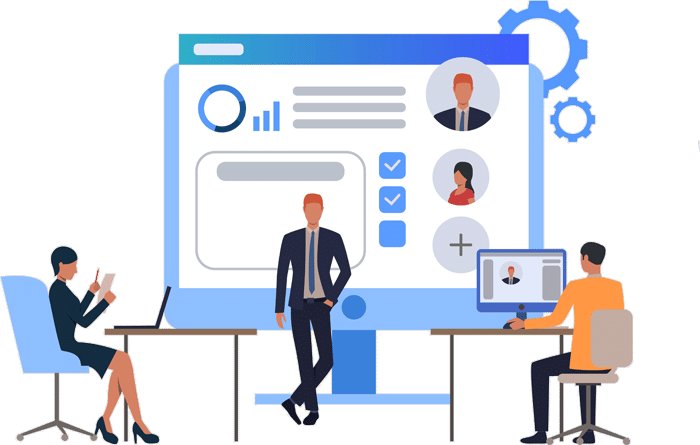ERP Innovations: Enhancing Efficiency and Growth in the Digital Age
Discover how innovative ERP solutions are revolutionizing business processes, enhancing efficiency, and driving growth and explore the benefits of integration.

Introduction
In today's fast-paced business environment, companies need to adapt swiftly to changing market dynamics, customer demands, and technological advancements. One of the most effective ways to achieve this adaptability is through the implementation of innovative Enterprise Resource Planning (ERP) solutions. These comprehensive software systems integrate various business processes, enabling organizations to operate more efficiently, make informed decisions, and ultimately drive growth. This article delves into how innovative ERP solutions are transforming business processes across industries.
The Evolution of ERP Systems
ERP systems have evolved significantly since their inception. Initially designed to streamline manufacturing processes, modern ERP solutions now encompass a wide range of business functions, including finance, human resources, supply chain management, customer relationship management (CRM), and more. This evolution has been driven by technological advancements such as cloud computing, artificial intelligence (AI), machine learning (ML), and the Internet of Things (IoT).
Key Benefits of Innovative ERP Solutions
-
Integration and Automation:
-
Data Integration: Innovative ERP solutions integrate data from various departments into a single platform. This ensures consistency and accuracy, facilitating better decision-making.
-
Process Automation: Routine tasks such as data entry, payroll processing, and inventory management are automated, reducing human error and operational costs.
-
Workflow Optimization: Automation streamlines workflows, improving efficiency and enabling employees to focus on more strategic activities.
-
-
Real-time Data Access and Analytics:
-
Instant Access: Employees can access real-time data from anywhere, at any time, enabling swift decision-making and response to market changes.
-
Advanced Analytics: ERP systems incorporate advanced analytical tools that provide insights into key performance indicators (KPIs), financial metrics, and operational efficiency.
-
Predictive Analytics: AI and ML capabilities within ERP systems can predict future trends, helping businesses to proactively address potential challenges.
-
-
Enhanced Collaboration and Communication:
-
Centralized Data: A single source of truth for all business data enhances transparency and ensures all departments are aligned.
-
Collaboration Tools: Built-in communication tools, such as chat and document sharing, facilitate better teamwork and project management.
-
Cross-departmental Coordination: ERP systems enable seamless collaboration between different departments, reducing silos and fostering a more unified organizational culture.
-
-
Scalability and Flexibility:
-
Modular Architecture: Modern ERP solutions are often modular, allowing businesses to add or remove functionalities as needed without disrupting operations.
-
Flexible Deployment: Options include on-premise, cloud-based, and hybrid models, enabling businesses to choose the deployment that best suits their needs and budget.
-
Adaptability: ERP systems can be customized to meet the unique requirements of different industries, from manufacturing to healthcare to retail.
-
-
Improved Customer Experience:
-
Integrated CRM: ERP systems often include CRM modules that provide a comprehensive view of customer interactions, preferences, and history.
-
Personalization: Enhanced customer insights enable businesses to offer personalized services and products, improving customer satisfaction and loyalty.
-
Efficient Service Delivery: Automated workflows and real-time data access ensure faster and more accurate responses to customer inquiries and issues.
-
Transforming Business Processes
-
Supply Chain Management:
-
Inventory Management: Real-time tracking of inventory levels helps in maintaining optimal stock levels, reducing the risk of overstocking or stockouts.
-
Supplier Coordination: ERP systems facilitate better communication and collaboration with suppliers, ensuring timely delivery of raw materials and components.
-
Demand Forecasting: Advanced analytics and AI can predict demand patterns, enabling more accurate production planning and inventory management.
-
-
Financial Management:
-
Automated Accounting: ERP solutions automate accounting tasks such as accounts payable, accounts receivable, and general ledger management, improving accuracy and efficiency.
-
Financial Reporting: Real-time financial reports provide a clear and up-to-date picture of the company's financial health, aiding in strategic planning and decision-making.
-
Regulatory Compliance: ERP systems ensure compliance with financial regulations by automating tax calculations, financial reporting, and audit trails.
-
-
Human Resources Management:
-
Payroll Processing: Automated payroll processing ensures accurate and timely payment of salaries, bonuses, and deductions, reducing administrative burden and errors.
-
Talent Management: ERP systems support recruitment, onboarding, performance evaluation, and employee development, helping organizations attract and retain top talent.
-
Employee Self-service: Self-service portals allow employees to access and update their personal information, view pay stubs, and request leave, improving HR efficiency and employee satisfaction.
-
-
Production and Manufacturing:
-
Production Planning: ERP systems optimize production schedules based on real-time demand and resource availability, improving efficiency and reducing downtime.
-
Quality Control: Integrated quality management modules help ensure that products meet quality standards through consistent monitoring and control processes.
-
Maintenance Management: ERP systems track equipment maintenance schedules, reducing the risk of unexpected breakdowns and prolonging the lifespan of machinery.
-
-
Sales and Marketing:
-
Sales Forecasting: Advanced analytics provide accurate sales forecasts, helping businesses plan production and inventory levels more effectively.
-
Campaign Management: ERP systems enable targeted marketing campaigns based on customer data and market trends, increasing the effectiveness of marketing efforts.
-
Customer Insights: Detailed customer data helps in understanding customer needs and preferences, enabling businesses to tailor their offerings and improve customer engagement.
-
Implementing ERP Solutions: Challenges and Considerations
-
Stakeholder Engagement:
-
Early Involvement: Engaging stakeholders from the outset ensures that their needs and concerns are addressed, increasing the likelihood of a successful implementation.
-
Continuous Communication: Regular updates and feedback sessions keep stakeholders informed and involved throughout the implementation process.
-
User Acceptance: Involving end-users in the selection and customization of the ERP system helps in gaining their acceptance and reducing resistance to change.
-
-
Change Management:
-
Training Programs: Comprehensive training programs ensure that employees are well-prepared to use the new system effectively.
-
Change Champions: Identifying and empowering change champions within the organization can facilitate smoother transitions and encourage adoption.
-
Communication Strategy: Clear and consistent communication about the benefits and changes brought by the ERP system helps in managing expectations and reducing resistance.
-
-
Data Migration:
-
Data Cleansing: Ensuring data accuracy and integrity before migration is crucial to avoid issues post-implementation.
-
Phased Approach: A phased approach to data migration can help in managing risks and ensuring a smoother transition.
-
Testing and Validation: Rigorous testing and validation of data post-migration ensure that the system functions as expected and data integrity is maintained.
-
-
Training and Support:
-
Comprehensive Training: Providing thorough training for all users ensures they can effectively utilize the ERP system's features.
-
Ongoing Support: Continuous support post-implementation helps in addressing any issues that arise and ensures users remain confident in using the system.
-
Feedback Mechanisms: Establishing mechanisms for users to provide feedback helps in identifying areas for improvement and ensuring the ERP system evolves to meet changing needs.
-
Conclusion
Innovative ERP solutions are transforming business processes by providing integrated, automated, and data-driven platforms that enhance efficiency, collaboration, and decision-making. As technology continues to evolve, ERP systems will become even more powerful, enabling businesses to stay competitive and thrive in an ever-changing landscape. Organizations that invest in the right ERP solutions and effectively manage their implementation will be well-positioned to achieve long-term success.
What's Your Reaction?





















